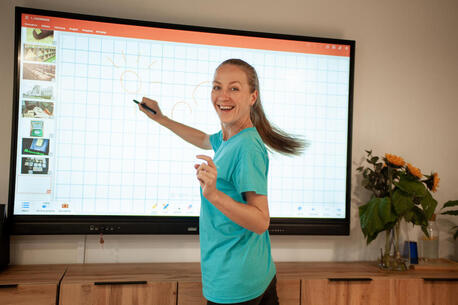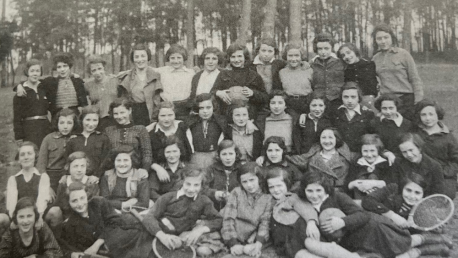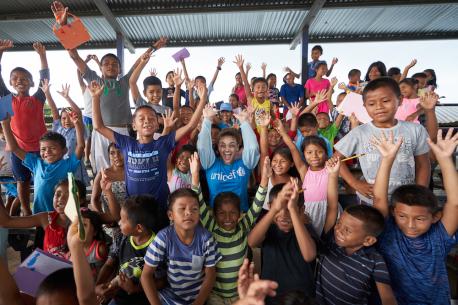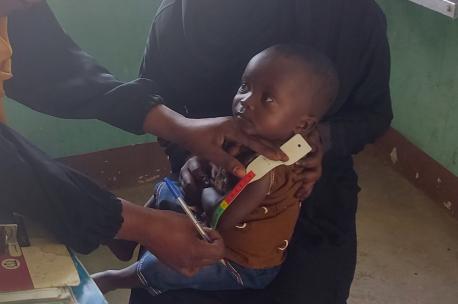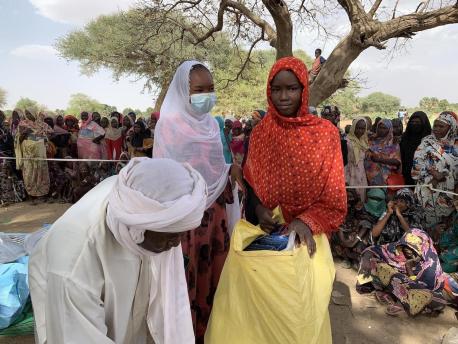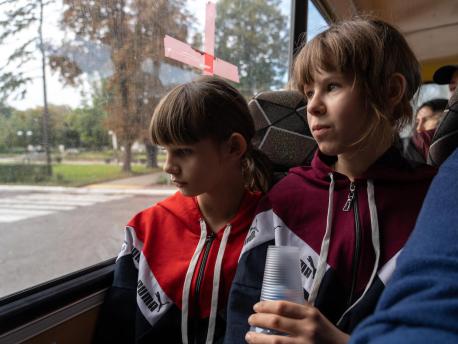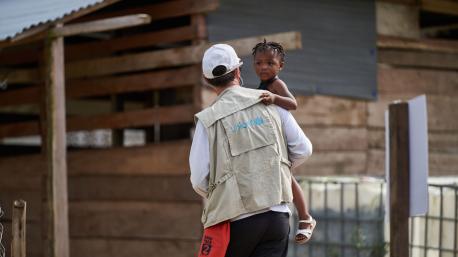
Child Refugees
and Migrants
Globally, there are tens of millions of refugees and internally displaced children and families struggling to survive, awaiting humanitarian aid or safe harbor. A look at how UNICEF and partners work to protect children on the move.
The number of people worldwide forced to flee conflict, violence, human rights violations and persecution has reached an all-time high, propelled by the war in Ukraine, by fighting in Gaza, Sudan, Syria, Burkina Faso, Myanmar, and by insecurity in Venezuela, the Democratic Republic of the Congo and elsewhere.
Climate shocks, earthquakes and other natural disasters continue to uproot vulnerable children and families. An estimated 60 percent of refugees and internally displaced people live in countries that are hardest hit by climate change.
Children who are uprooted from their homes shouldn't have to forfeit their childhoods. They urgently need help, and UNICEF won't stop helping them.
Every displaced child — especially the youngest and most vulnerable — deserves respect, assistance and protection. Whether children on the move are migrants, refugees or internally displaced, they are all children first.
Providing protective services to help uprooted children stay safe and healthy
Whether in Eastern Europe or the Middle East, Africa, Southeast Asia or the Americas, UNICEF acts to defend the rights of child refugees and migrants and to protect their futures.
UNICEF also creates safe spaces for uprooted children to learn and play and to receive mental health and psychosocial support, whether they are staying in camps or informal settlements or in host communities.
Here are some examples of how UNICEF is helping refugees around the world.
Europe and Central Asia: UNICEF's response to the Ukrainian refugee emergency
Millions of people fled Ukraine when war escalated on Feb. 24, 2022. Roughly 9 out of 10 of them are children and women.
While many have since returned, an estimated 6 million remain in refugee host countries across Europe and over 3.7 million remain internally displaced in the country.
UNICEF assisted children and families on the move at dozens of 'Blue Dot' centers jointly established along transit routes with UNHCR in close coordination with local authorities and other partners. These centers reached up to 1,000 people a day with education and psychosocial support, health care, safe water and hygiene supplies, protection and other services.
There are over 180 similar facilities called Spilno centers operating inside Ukraine. Like other UNICEF Child-Friendly Spaces, the Spilnos offer a welcoming space for kids to rest, play, and simply be a child at a time when their world has been turned upside down.
In refugee host countries, UNICEF is supporting child refugees by training local teachers in inclusive learning approaches and supporting cash assistance programs, among other services.
Syrian Refugee Crisis: reaching vulnerable children living in Egypt, Iraq, Jordan, Lebanon and Turkey
Refugees from Syria account for almost 1 in 5 refugees globally, with 6.8 million registered refugees — including 2.7 million children — living in Egypt, Iraq, Jordan, Lebanon and Türkiye. Syrian children born in 2011, when civil conflict began, are entering their teenage years.
Together with partners, UNICEF continues to support Syrian refugee children and families living in camps, informal settlements and urban settings — as well as vulnerable children from host communities — with essential education, water and sanitation and hygiene (WASH), child protection, health, nutrition and social protection services and adolescent and youth programs.
Southeast Asia: How UNICEF is supporting Rohingya refugees
There are 1.1 million Rohingya refugees, including some 750,000 who fled Myanmar in August 2017 to escape violence and persecution. Most Rohingya refugees are women and children, and 90 percent of them live in Bangladesh and Malaysia.
UNICEF supports a range of humanitarian interventions alongside partners in Cox’s Bazar, Bangladesh, the largest refugee settlement in the world. Education programs with partners aim to serve over 250,000 children in Cox's Bazar and Bhasan Char.
The Americas: safeguarding children's rights
UNICEF is leveraging decades of humanitarian expertise to help children fleeing gang violence, persecution, extreme poverty and the devastating effects of climate change in countries like El Salvador, Guatemala and Honduras. UNICEF’s work supporting and protecting the rights of children on the move includes supporting shelters and service providers along migration routes and working with partners in-country to address the root causes of migration.
